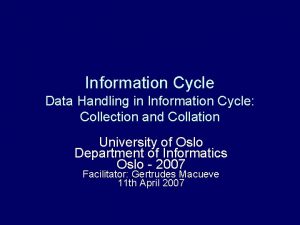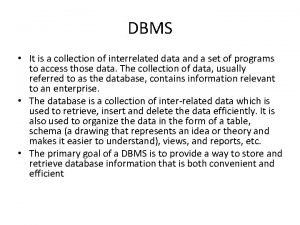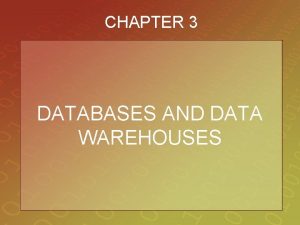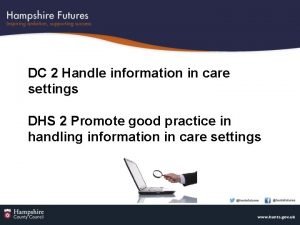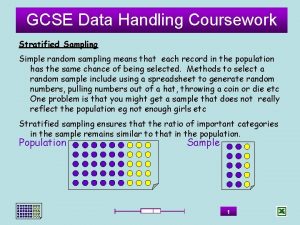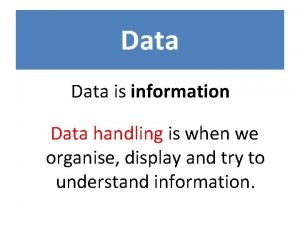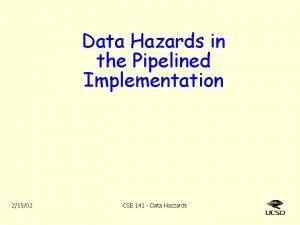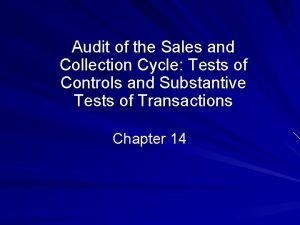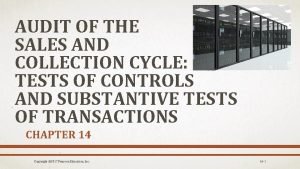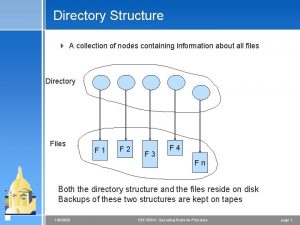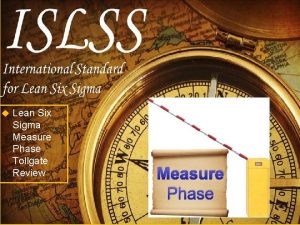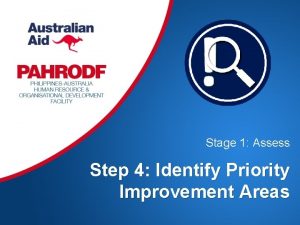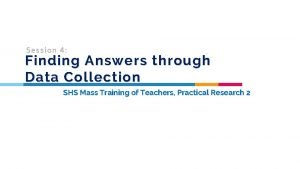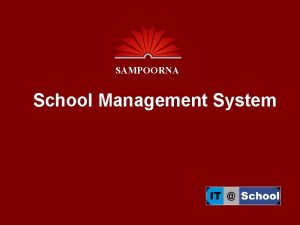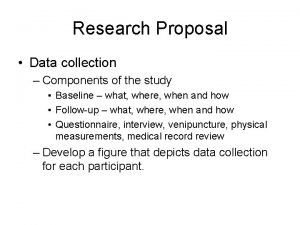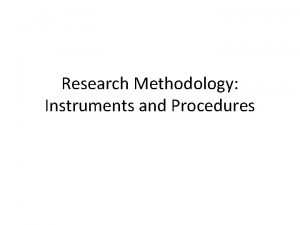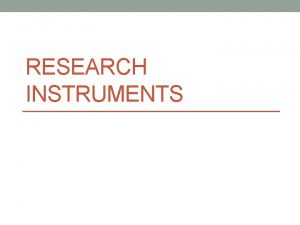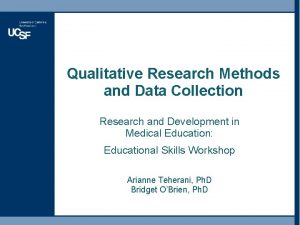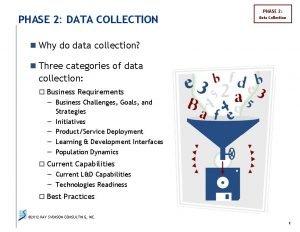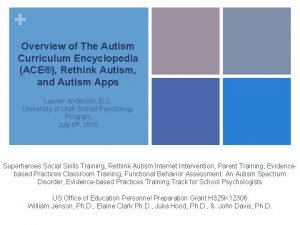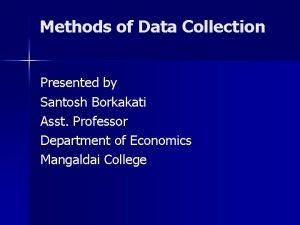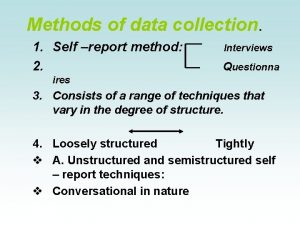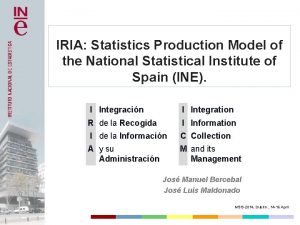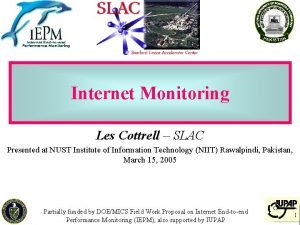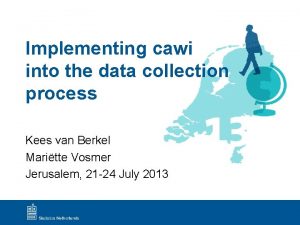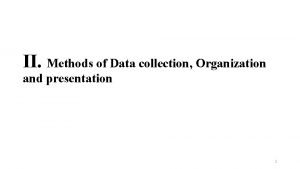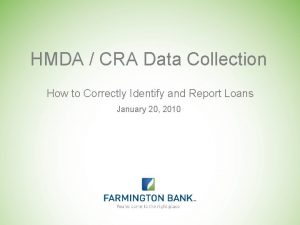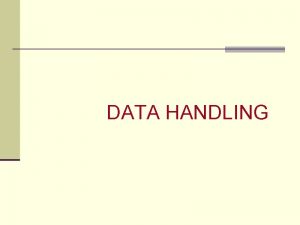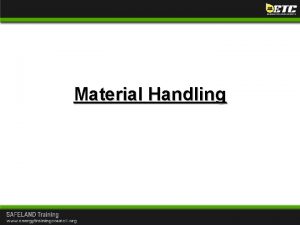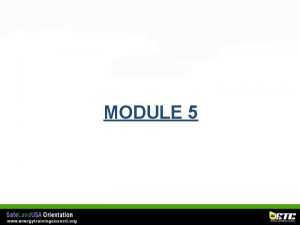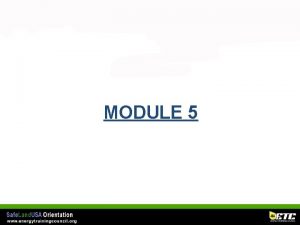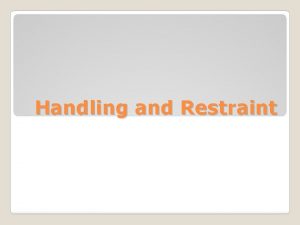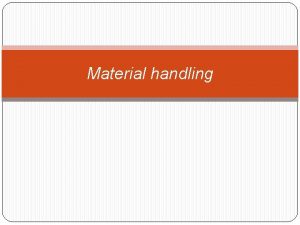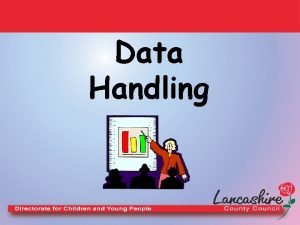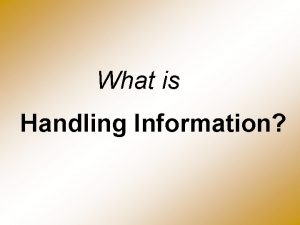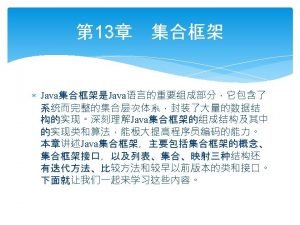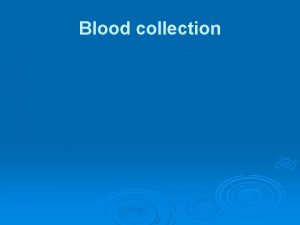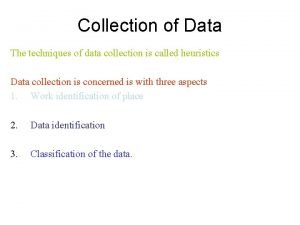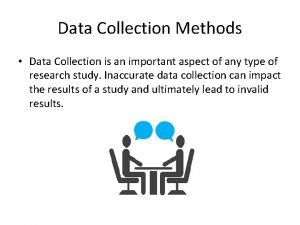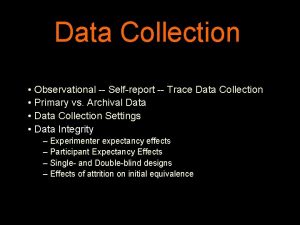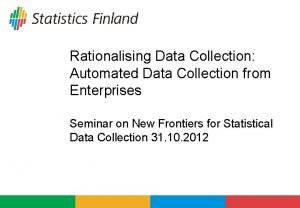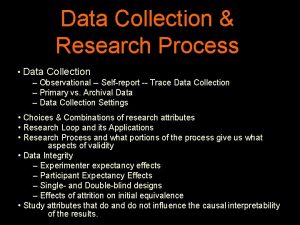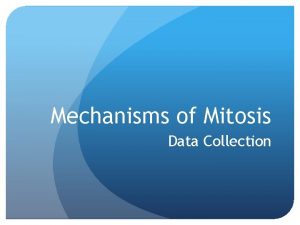Information Cycle Data Handling in Information Cycle Collection































- Slides: 31

Information Cycle Data Handling in Information Cycle: Collection and Collation University of Oslo Department of Informatics Oslo - 2007 Facilitator: Gertrudes Macueve 11 th April 2007

Learning objectives (1) • Define what is data and what is information • Identify the different stages of the information cycle • Explain how to handle data • Recognize the difference between collecting data and gathering data • Identify data collection tools

Learning objectives (2) • Explain the need for flexibility and standardization in data collection • Explain the rationale for use of an essential dataset • Explain the correlation between data elements and indicators • Define what is data collation • Indicate common data collation methods and problems

Data and information • Data – observations and measurements about the world, e. g. – Representation of observations or concepts suitable for communication, interpretation, and processing by humans or machines. – May or may be not useful to a particular task. • Information – facts extracted from a set of data (interpreted data), Meaningful and useful – Data brought together in aggregate to demonstrate facts; – It is useful to a particular task.

Information Cycle What do we collect? How do we use it? Quality information How do we present it? What do we do with it?

Information Cycle Decisionmaking for effective management How do we use it? Interpretation of information What do we collect? data sources & tools Quality at every stage EDS feedback How do we present it? Reports & graphs Stages Tools Outputs Good quality data What do we do with it? Process & Analysis Data converted to information

Data Handling in the Information Cycle: 1. Data collection

The starting point… Feeding the information cycle Presenting Interpreting Output INFORMATION ANALYSIS Processing USE Collection Input Raw data

Data collection • Two ways to obtain data 1. Collect data: Physical counting of elements 2. Gather data: if data have already been collected; Requirements: • The definitions of the data are the same as ours • The format in which the data are collected, is the same • Data are collected reasonably accurately • We are able to negotiate access to the data

Data collection/gathering guiding principles • • • WHO health care workers at all levels WHAT Essential Data Set WHEN daily – collated weekly & processed monthly WHERE work sites, facilities, districts (info filter) HOW data sources (tally sheets, registers etc) WHY To monitor progress towards goals & targets To Plan new policies and changes To evaluate current services To assist health management processes

What data elements should be collected? • Can provide useful information (affecting the management decisions) • Cannot be obtained elsewhere • Are easy to collect • Do not require much work or time • Can be collected relatively accurately q ESSENTIAL DATA SET based on indicators reflecting the health status of the community

Essential data set The % of children under one year who are fully immunised Drop out rate DPT 13; measles coverage The % of children under two years who are fully immunised MUST KNOW Other programme vaccines given

Essential data set at each level • Standardised • Usefulness • Address the needs of all stakeholders • User-friendly • Dynamic

Where do we get data from? • Routine data collection – Routine health unit and community data • Activity data about patients seen and programmes run, routine services and epidemiological surveillance; e. g. • Semi-permanent data about the population served, the facility itself and staff that run it – Civil registration

Where do we get data from? • Non-routine data collection – Surveys – Population census (headcounts proportion/facility catchment’s area) – Quantitative or qualitative rapid assessment methods

Example: data collected at PHC facilities Special programme activities Routine Service Activities Epidemiological surveillance Administrative Systems Population • Mental & reproductive health • Child health & nutrition • HIV/AIDS, STI and TB • Chronic diseases • Minor ailments • Non-priority activities • Notifiable diseases • Environmental health • Infrastructure, equipment • Human resources • Drugs, transport, labs, finances, budget, staff • Census: age, sex, place • Births & deaths registration

Requirement for data collection: Standardised definitions • Essential standardised definitions of both data elements and indicators: – To ensure comparability between different facilities, districts and provinces – To ensure comparability across years

Data collection tools A. Client Record Cards B. Tally Sheets C. Registers

A. Client Record Cards • Record details of the client’s interaction with the health service, e. g. : – Health facility record system (traditional) Associated with misfiling and loss vs – Client-held record system (Road to Health Card, Child Health Booklet, Women’s Health Book, TB patient treatment card); Associated with efficiency of the individual concern, suitable for mobile community

Road to Health card

Family planning consultation card

B. Tally sheets • Easy way of counting identical events that do not have to be followed-up (e. g. headcounts, children weighed)

C. Registers • Record data that need follow-up over long periods such as ANC, immunisation, FP, TB

Assessment of data collection tools (Using SOURCE criteria) v conduct an information audit of all tools – type & number Ø S simple – ease of use (layout) Ø O overlap – duplication (no overlap) Ø U useful for – indicators (relevance) Ø R relevance Ø C clear – ease of use (layout) Ø E effective – decisions used for (purpose)

Data collection Tools criteria for appropriateness TOOL How many? • client cards • tally sheets • registers • reports PURPOSE LAYOUT Effective decisionmaking for: • Public health • Management • Supervision/ support • monitoring • evaluation Simple, Clear, Easy to understand RELEVAN CE OVERLA P Useful for: • no • Output/ Outcome/imp ut/ Process • coverage/ • Priority actions Quality • No useless • incidence/ data prevalence • Missing actions evident Overlap with other forms • What • When • Where • Why • How

Data Collation

Ways of collating data 1. summarising data from the same data elements but from different sources 2. summarising data from the same source but over a period of time.

Common collation problems • • Incorrect grouping of data Data are incorrectly added Missing data forms Double counting of data

Data collation practical methods Unities method

Data collation practical methods Rectangles method

Data collation practical methods Zeros Method (Tally sheet)
 Data handling cycle
Data handling cycle Landsat collection 1 vs collection 2
Landsat collection 1 vs collection 2 D/a 30 days after sight
D/a 30 days after sight A collection of interrelated data
A collection of interrelated data A data warehouse is a logical collection of information
A data warehouse is a logical collection of information Research procedure in methodology
Research procedure in methodology The terms external secondary data and syndicated
The terms external secondary data and syndicated Handling information in health and social care
Handling information in health and social care Data handling gcse
Data handling gcse What is data handling
What is data handling Handling data hazards
Handling data hazards Uncollectible account authorization form
Uncollectible account authorization form Internal controls for sales and collection cycle
Internal controls for sales and collection cycle Collection of nodes containing information about all files
Collection of nodes containing information about all files Narrative report with contextual descriptions
Narrative report with contextual descriptions Tollgate review
Tollgate review Identifying priority improvement areas
Identifying priority improvement areas Finding answer through data collection
Finding answer through data collection Sampoorna school
Sampoorna school Data collection procedure in research proposal
Data collection procedure in research proposal Definition of terms in research
Definition of terms in research Example of research instrument
Example of research instrument Define data collection method
Define data collection method Data collection phase
Data collection phase Ace autism
Ace autism Interview method of data collection
Interview method of data collection Self-report method
Self-report method Www.ine.iria
Www.ine.iria Network data collection at slac
Network data collection at slac Cawi data collection
Cawi data collection Data collection organization and presentation
Data collection organization and presentation Hmda & cra data integrity reviews
Hmda & cra data integrity reviews
